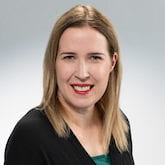Speaker: Johanna Laakkonen, PhD, Associate Professor, Academy Research Fellow, University of Eastern Finland, A.I. Virtanen Institute for Molecular Sciences
Date: Thursday, May 11, 2023, noon-1 p.m.
Location: Tom and Linda Atkins Family Seminar Room, Roy Blunt NextGen Precision Health building
*Zoom option available
Register Here
Description
In this presentation, Dr. Laakkonen describes how fibroblasts and endothelial cells communicate to facilitate angiogenesis in vascular anomalies, and why paracrine signaling and cell-cell crosstalk are important to consider when planning anti-angiogenic therapeutic approaches. Dr. Laakkonen also will share insights into how viral vector-mediated gene therapy can be used to modulate growth factor signaling for the treatment of vascular diseases. She also describes new therapeutic strategies for inhibition of venous lesion growth.

About the Speaker
Dr. Johanna Laakkonen is a group leader in the A.I. Virtanen Institute for Molecular Sciences at the University of Eastern Finland where she serves as an Academy Research Fellow and co-principal investigator for a Flagship Consortium Award from the Academy of Finland. She has extensive training and background as a vascular biologist and in vectorology. Dr. Laakkonen did her PhD at University of Jyväskylä in Finland from 2004 to 2008 on cellular targeting of virus vectors. From 2009 to 2011, she worked as a post-doctoral researcher in Professor Stefan Kochanek’s group at the University Hospital of Ulm in Germany on viral vector-mediated endothelium targeting. From 2011 to 2014, Laakkonen did her postdoctoral period in Professor Seppo Ylä-Herttuala’s group on gene therapy and vascular diseases. Currently, her research group focuses on discovering novel molecular targets for the treatment of vascular diseases, particularly for vascular anomalies and aneurysms using vector technologies focusing on the endothelium.